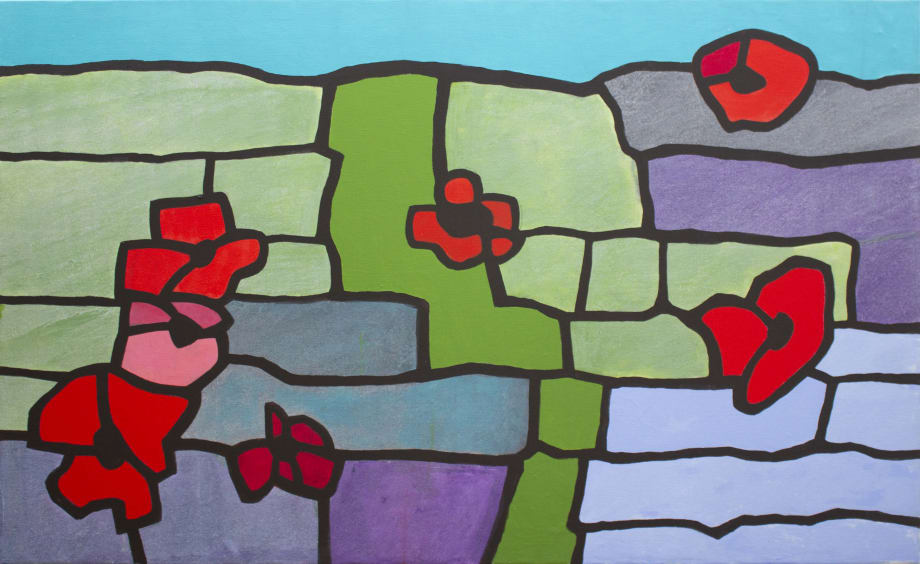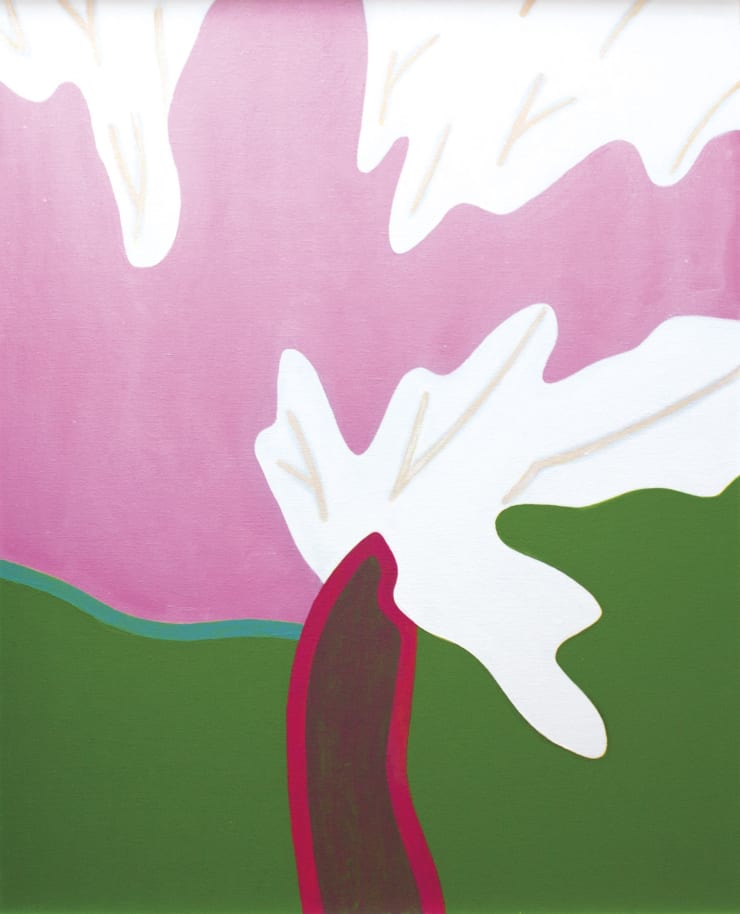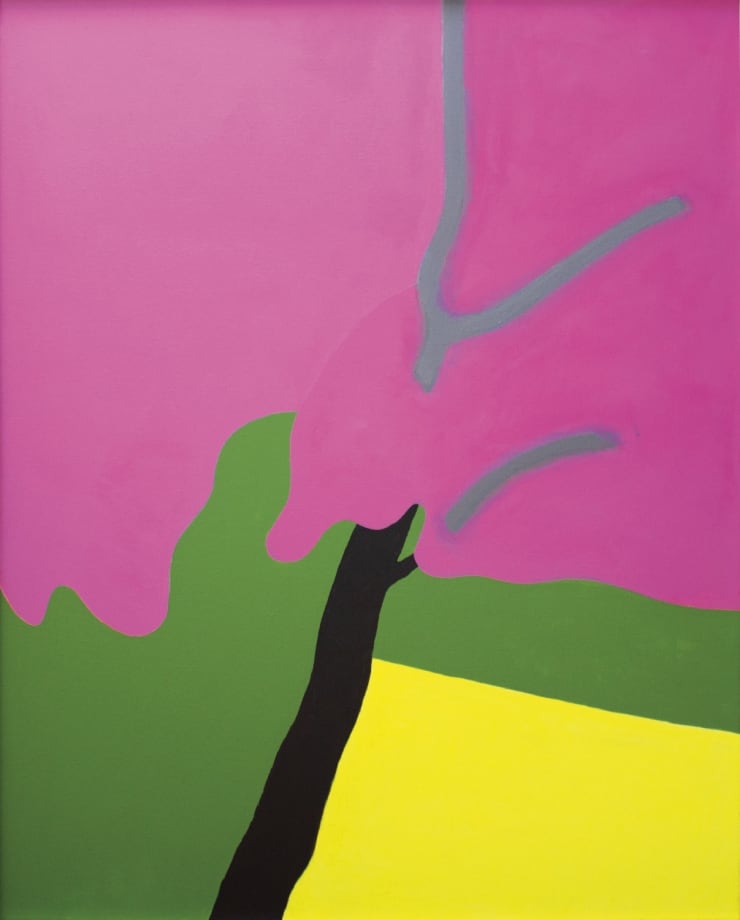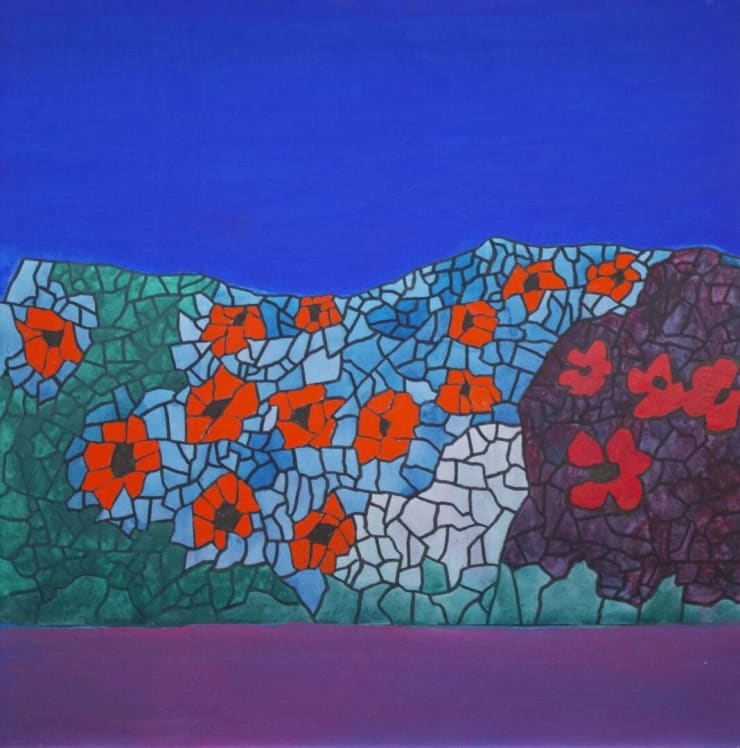James Hyman Gallery is delighted to present a vibrant exhibition in celebration of Derrick Greaves’ 95th Birthday.
From Shangri-La to the Walled Garden includes paintings, watercolours and collages made during the last 15 years. The climax is a group of large-scale paintings made over the last two years that are an exhilarating assertion of the extraordinary inventive energy of this major figure in British Art.
James Hyman explains:
“We are proud to have represented Derrick Greaves for twenty years. In 2007, Lund Humphries published a major monograph on the artist and that same year, in honour of the artist’s 80th birthday, we staged a threepart chronological survey of his work. At that time, Derrick was keen to emphasise that he was still exploring, still inventing, still as excited as ever by what he discovered in the studio each and every day. He was, rightly, concerned that the book and exhibition should not appear too final, that there were more chapters to come. I’m delighted that each exhibition since then has been inventive, distinctive and different; an assertion of Derrick’s extraordinary creativity. This latest exhibition, held in celebration of Derrick Greaves’ 95th Birthday, is again different, again exciting and even includes a new painting that is still wet! Derrick, we wish you a very Happy Birthday!”
As an artist Greaves has always looked forward but now, in his nineties, he also draws from his work of earlier decades. In these latest works Greaves has revisited his plans chests to create new collages, has reworked earlier paintings and has made major new works on new themes. Most tellingly recent paintings of a walled garden build from his earlier Shangri-La series.
In 2003 at the time of the first Gulf War Greaves produced an uplifting series entitled Shangri-La, which celebrated individual creativity and imagination in the face of conflict. Similarly, the new Walled Garden paintings respond to the events of his lifetime. The motif is simple – a rough stone wall similar to those dividing the fields of the Derbyshire hills in which Greaves played as a child in the 1940s - but its resonance is profound and contemporary.
These new paintings are a meditation on the last two years of lockdowns and confinement. They are a response, also, to the rhetoric of Brexit and Trump with their stress on borders and wall-building. These are restrictive walls that confine people inside or attempt to keep them outside. Above all Greaves reflects on the personal and psychological impact of these actual and rhetorical barriers. As he explained to me on a recent studio visit:
“This whole idea of an environment which was suddenly enclosed, gripped people with a new reality of what life really is - that it was individual freedom that counted. But for individual freedom to count, it has to be defined by each individual. People started to find out that although they were enclosed in what might be a protective walled garden, nevertheless they didn’t have the capacity to be able to break out imaginatively from the feeling of being enclosed.”
As Greaves worked on these paintings and watercolours nature began to encroach. As Greaves comments:
“as I continued to work on the paintings I was really pleased to see the flowers appearing in the walls because that wasn’t my intention in the first place. The walled garden became symptomatic of something that could be threatening and enclosing but at the same time could be beautiful, floral and gorgeous.”
Now with war in Ukraine, one thinks too of the flowers that bloom even on bomb sites or the poppies that now cover the battle fields of Normandy. Derrick Greaves’ achievement in these latest Walled Garden paintings is to respond to the events of his lifetime and, whilst recognising the horrors, to still discover something beautiful and uplifting. What could be a greater accomplishment!
About the artist
Derrick Greaves is one of the most important British painters of the last half century. Greaves initially gained acclaim in the 1950s, when he represented Britain at the Venice Biennale along with the other ‘Kitchen-Sink’ painters with whom he was associated: John Bratby, Edward Middleditch and Jack Smith. His work has developed from the social realism of the 1950s to a more heraldic style that paralleled 1960s Pop Art, from an imagery based on nature and observable fact to more studio-bound imaginative constructs.








































